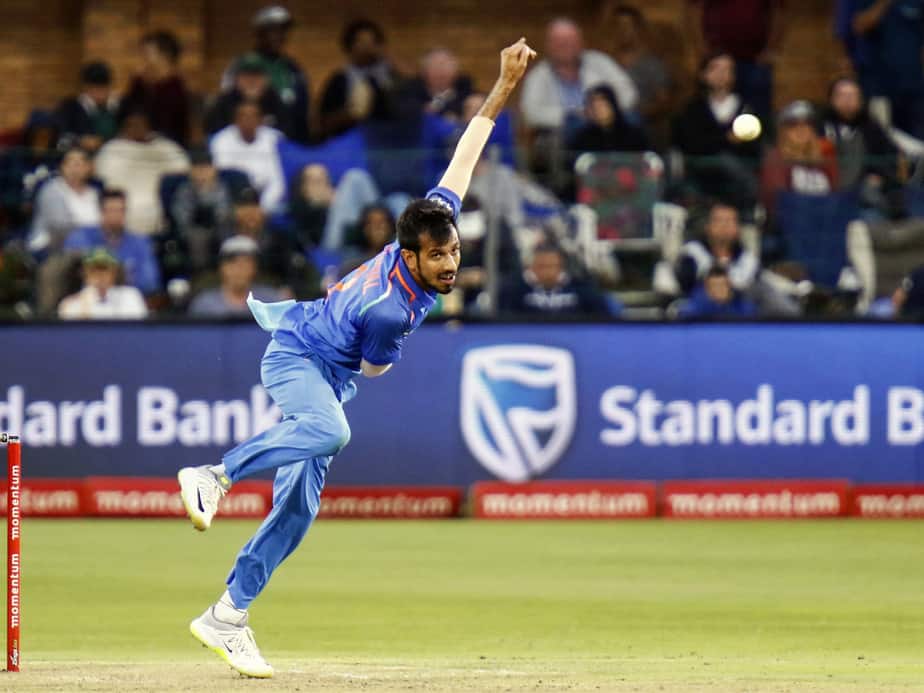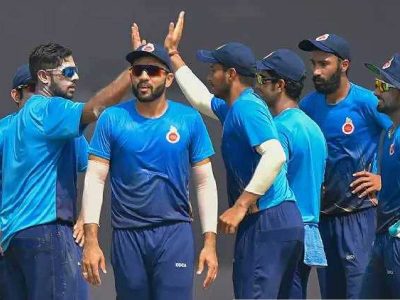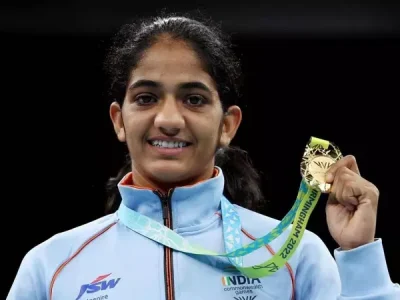INDIA’S WRIST SPIN DUO LAY THE FOUNDATIONS FOR THE TEAM’S FIRST SERIES VICTORY ON SOUTH AFRICAN SOIL
Fashioned by the top order and sewed together by wrist spin, India have picked up their maiden bilateral series in South Africa across any format (barring a one off T20). This is a unique achievement, and one that should not be brushed under the carpet, because of the overwhelming margin of victory.
First, because South Africa rarely lose at home. They have played 25 bilateral series of five or more matches at home, and this is only the third time they have lost such a series. The previous time was way back in 2001-02 against Australia. The other instance was also against Australia, in 1996-97. This is the first time India have won an ODI series in South Africa in five attempts.
India have several things to celebrate about—Rohit Sharma’s century in the fifth ODI a welcome return to the normal by the opener—and chief among that will be the resurgence of their ODI dominance in unfamiliar surroundings, in the year preceding the World Cup.
India dominated South Africa in every department, and didn’t just betteer their performances but made sure their opponents crumbled, a key aspect to the sport that is often ignored. South Africa averaged 22.65 with the bat and 50.20 with the ball in five matches; both the worst in any bilateral series at home for them. Their previous worst home series in terms of batting average was against New Zealand in 2012-13 (24.96), and the previous worst in terms of bowling average was also against New Zealand in 2007-08 (40.94).
SPIN CYCLE
One of the standout characteristics of this Indian victory has ben the dominace of their spinners in a series away from home. Indian spinners picking buckets of wickets at home is the norm, but them dominating oppositio away is something that is rarely seen, and almost always savoured. The duo of Yuzvendra Chahal (14 wickets at 16.00) and Kuldeep Yadav (16 wickets at 11.56) have taken 30 of the 43 South African wickets in five matches at an average of 13.63. The only game they failed to deliver in, India lost.

Chahal’s effectiveness is almost expected at this point. In limited overs cricket, leg spinners have always been under utilised and unappreciated, but their influence is huge.
Former Indian opener Akash Chopra nails the logic for this. “Most batsmen, when they try to take the aerial route against spinners, prefer to use the power generated by the bottom hand because there’s very little pace available on the ball,” he says, “and so they target the midwicket region. Which means legspinners have the ability to force the batsman to play against the spin most of the time.”
Chahal’s short stature and roundarm action (to extract sidespin), also lowers the trajectory of the ball considerably. The lower the trajectory, the tougher it is for batsmen to use their feet to get to the pitch of the ball.
PROTEA PROBLEMS
No matter who you speak to, the opinions is unanimous. AB de Villiers’s absence has been felt hugely by South Africa in this series. There have been three press conferences since it was announced that he was available to play again, and in each of them his team-mates were asked about what he brought to the team. These are expected questions. De Villiers is one of South Africa’s big four in ODIs. Three (Quinton de Kock, Faf Du Plessis the other two) were injured before the last match. The fourth, Hashim Amla, has been kept eerily quiet. Therein lies India’s biggest success.
While India’s spinners and Virat Kohli’s run machine take huge credit for India’s series victory, some of it must also be given to the fast bowlers, who ensured that Amla didn’t face a ball of spin in the first three ODIs.
Barring a drastic turnaround, Amla is on track for one of his worst ODI series ever. The fastest man to 2000, 3000, 4000, 5000, 6000 and 7000 ODI runs is now in a bit of a rut against excellent planning and spot-on execution from India. This isn’t the first time Amla has struggled to make an impact in limited over cricket. Twice before, he went through series longer than four matches without a half-century, against India in 2015-16 and against New Zealand in 2016-17, aggregating 89 and 100 runs. However, there was no pattern to his dismissals in either of those failures.
In this one, there is. The trend began in the second innings of the Centurion Test. Jasprit Bumrah bowled short of a length, the ball skidded through and caught Amla mid shuffle bang in front of the stumps. The Tv camera immediately cut to India’s video analyst applauding from behind his laptop, suggesting this was a plan, not a random play.
Bumrah has dismissed him leg before twice more in this tour and Bhuvaneshwar Kumar has taken the inside edge once. Trying to trap a shuffler inside his crease and beat his inside edge is a temptation for bowlers, early in a batsman’s career, but with Amla, most have been disappointed.
Amla has faced hundreds of balls by several legendary fast bowlers over his career, and no one has ever nailed him lbw more than twice in their career. Bumrah has done it thrice. In one tour.
Amla is a genius, and the greateness of geniuses is in adaptation. India didn’t drop the plan at Port Elizabeth, and Amla adapted. He moved forward to deliveries he usually played from inside the crease. And he succeeded, scoring what seemed like a match saving half century at the time. And then, India played their second card and picked him up on his second weakness—running between wickets.
The next five wickets after Amla fell in 47 balls, all to wristspin and three in four balls in Kuldeep’s last over. India had adapted, pushed through adversity, and managed to win through.
All good signs for a team ranked No. 1 in the world now, and who are undoubtedly favourites in limited over cricket, no matter the conditions they play in now.





